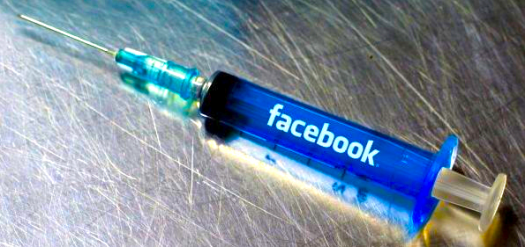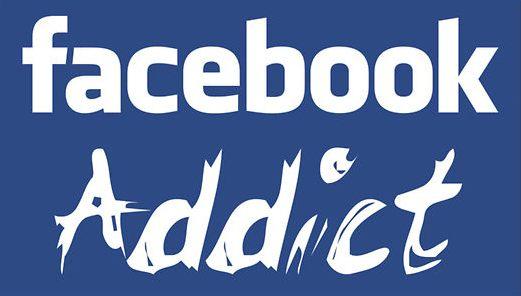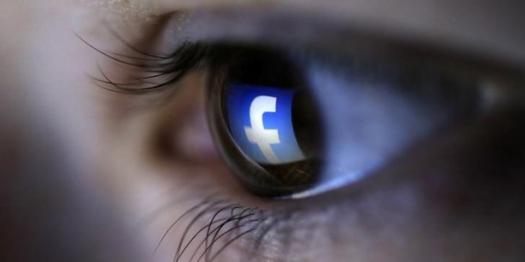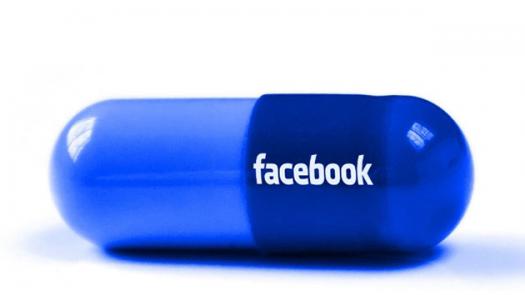An Ultimate Quiz On Facebook Addiction!

Facebook is a social platform where people meets each other and some groups are taken place. People get addicted to facebook due to its multi purpose effect in life, it make people feel ease from boredom and depression. In fact many people have been addicted to it for one or the other reason. How do people get addicted?
Take this quiz now!
- 1.
Which of these describes facebook addiction?
- A.
Using facebook to search information
- B.
Chatting with family members via facebook
- C.
Spending of much time on facebook
- D.
Creating a facebook account
Correct Answer
C. Spending of much time on facebookExplanation
The correct answer is "Spending of much time on facebook." This describes facebook addiction because it suggests that the person spends a significant amount of time on the platform, indicating a potential dependency or obsession with using Facebook.Rate this question:
-
- 2.
Which of these does not show a facebook addiction sign?
- A.
Chatting with family members
- B.
Bathroom Updates
- C.
Frequent Status Updates
- D.
Pet Updates
Correct Answer
A. Chatting with family membersExplanation
Chatting with family members does not show a Facebook addiction sign because it is a normal and healthy way of communication. Facebook addiction signs usually include excessive time spent on the platform, neglecting other activities, constantly updating statuses, and obsessively sharing updates about pets or personal life. However, chatting with family members is a common and meaningful interaction that does not necessarily indicate addiction.Rate this question:
-
- 3.
Which of these can reduce the addiction rate?
- A.
Posting of pets
- B.
Deactivation of facebook
- C.
Having more friends
- D.
Creation of more accounts
Correct Answer
B. Deactivation of facebookExplanation
Deactivation of Facebook can reduce the addiction rate because Facebook is a highly addictive platform that can consume a significant amount of time and attention. By deactivating Facebook, individuals can break free from the constant need for validation and the addictive scrolling behavior that often leads to decreased productivity and increased anxiety. Removing this source of addiction can allow individuals to focus on healthier activities and relationships, ultimately reducing their addiction rate.Rate this question:
-
- 4.
What is the main factor in reduction of facebook usage?
- A.
Self-esteem
- B.
Self-employed
- C.
Self-control
- D.
Self-awareness
Correct Answer
C. Self-controlExplanation
The main factor in the reduction of Facebook usage is self-control. Self-control refers to the ability to regulate one's own behavior and impulses. In the context of Facebook usage, it means being able to limit the time spent on the platform and resist the urge to constantly check notifications or engage in excessive scrolling. Self-control is essential in managing online activities and maintaining a healthy balance between virtual and real-life interactions.Rate this question:
-
- 5.
Which of these increases the rate of addiction to facebook?
- A.
Creating time for chatting
- B.
Obsessive checking of notifications
- C.
Logging in to account once in a while
- D.
Not leaving in the past
Correct Answer
B. Obsessive checking of notificationsExplanation
Obsessive checking of notifications increases the rate of addiction to Facebook because it creates a constant need for validation and instant gratification. When individuals constantly check their notifications, they become more dependent on the dopamine rush that comes from receiving likes, comments, and messages. This behavior reinforces the addictive cycle, making it difficult for individuals to break away from the platform and leading to a higher likelihood of addiction.Rate this question:
-
- 6.
Which of these brings about frequent checking of facebook feed?
- A.
Creation of facebook page
- B.
Having a facebook group
- C.
Important messages reading
- D.
Fear of missing out
Correct Answer
D. Fear of missing outExplanation
The fear of missing out can bring about frequent checking of the Facebook feed. This is because individuals who have a fear of missing out on important updates or events feel the need to constantly stay connected and updated with what is happening on Facebook. They may worry that they will miss out on important news, updates from friends, or exciting events if they do not frequently check their feed. This fear drives them to check their Facebook feed frequently to ensure they are not missing out on anything important.Rate this question:
-
- 7.
What is the first step in fighting facebook addiction?
- A.
Having speculated time for chatting
- B.
Deleting facebook from device
- C.
Knowing one's addiction status
- D.
Deleting past posts
Correct Answer
C. Knowing one's addiction statusExplanation
The first step in fighting Facebook addiction is to know one's addiction status. This involves recognizing and acknowledging that there is a problem with excessive use of Facebook and understanding the negative impact it has on one's life. Once a person is aware of their addiction, they can then take the necessary steps to address it and reduce their dependence on the platform.Rate this question:
-
- 8.
Which of these is not a symbol of addiction to facebook?
- A.
Over-sharing of posts
- B.
Chatting
- C.
Feed refreshing
- D.
Notifications checking
Correct Answer
B. ChattingExplanation
Chatting is not a symbol of addiction to Facebook because it is a common feature and a primary means of communication on the platform. Addiction to Facebook is typically associated with behaviors such as over-sharing of posts, constantly refreshing the feed, and compulsively checking notifications. While chatting can be a part of the addictive behavior, it is not a distinct symbol of addiction on its own.Rate this question:
-
- 9.
What brings about obsessive checking of notifications?
- A.
Group talk
- B.
Chatting
- C.
People-pleasing
- D.
Avoiding missing of messages
Correct Answer
C. People-pleasingExplanation
The obsessive checking of notifications can be brought about by people-pleasing tendencies. Individuals who have a strong desire to please others may constantly check their notifications in fear of missing any important messages or updates. They want to be responsive and available at all times to ensure they are meeting the expectations of others. This behavior can stem from a fear of disappointing or being left out, leading to an excessive need for validation and constant checking of notifications.Rate this question:
-
- 10.
Which of these cannot help in facebook addiction reduction?
- A.
Adding more friends
- B.
Early morning chatting
- C.
Sharing the problem with friends
- D.
Chatting at work
Correct Answer
C. Sharing the problem with friendsExplanation
Sharing the problem with friends cannot help in reducing Facebook addiction because it does not address the root cause of the addiction. While talking to friends about the problem may provide temporary relief or support, it does not address the underlying issues that contribute to the addiction, such as a lack of self-control or using Facebook as a coping mechanism. In order to reduce Facebook addiction, it is important to implement strategies that address these underlying causes, such as setting limits on social media usage, finding alternative activities to engage in, and seeking professional help if necessary.Rate this question:
-
Quiz Review Timeline +
Our quizzes are rigorously reviewed, monitored and continuously updated by our expert board to maintain accuracy, relevance, and timeliness.
-
Current Version
-
Mar 20, 2023Quiz Edited by
ProProfs Editorial Team -
Oct 15, 2018Quiz Created by
Gregorynaomi
 Back to top
Back to top












